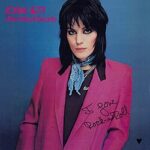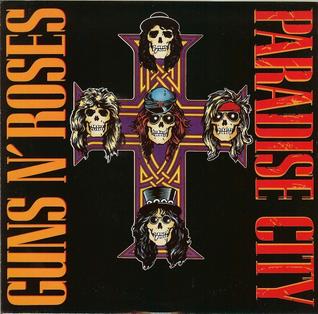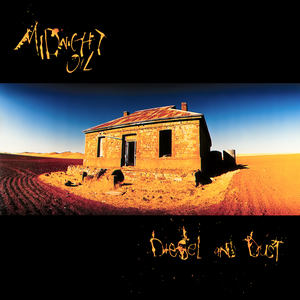 When I Love Rock ’n’ Roll blasted onto the airwaves in 1981, it didn’t just become a hit—it became a mission statement. Joan Jett wasn’t merely declaring her musical preference; she was reclaiming rock itself. Her growl, her sneer, and her swagger cut through the glossy pop and soft rock dominating radio, reminding everyone that raw attitude was still the heart of the genre. With its stomping rhythm, snarling guitar, and unforgettable chorus, the song became both a battle cry for outsiders and a celebration of the primal thrill that rock ’n’ roll brings.
When I Love Rock ’n’ Roll blasted onto the airwaves in 1981, it didn’t just become a hit—it became a mission statement. Joan Jett wasn’t merely declaring her musical preference; she was reclaiming rock itself. Her growl, her sneer, and her swagger cut through the glossy pop and soft rock dominating radio, reminding everyone that raw attitude was still the heart of the genre. With its stomping rhythm, snarling guitar, and unforgettable chorus, the song became both a battle cry for outsiders and a celebration of the primal thrill that rock ’n’ roll brings.
For Joan Jett, I Love Rock ’n’ Roll wasn’t just another track—it was vindication. After her former band, The Runaways, dissolved in the late 1970s, she faced rejection from nearly two dozen record labels who didn’t know what to do with a leather-clad woman playing loud, dirty rock. So, she did it herself. With producer Kenny Laguna at her side, she formed her own label, Blackheart Records, recorded the song, and changed rock history. It became a #1 hit, spent seven weeks atop the Billboard Hot 100, and transformed Jett into an icon of defiant cool.
Over forty years later, I Love Rock ’n’ Roll still stands as one of the most recognizable anthems ever recorded—a song that captures the electricity of rebellion, youth, and sheer rock power in less than three minutes.
The Origins: A British Pub Song Becomes a Global Anthem
Though it’s impossible to imagine anyone but Joan Jett snarling “I love rock ’n’ roll, so put another dime in the jukebox, baby,” the song actually began life across the Atlantic. It was first written and recorded by the British band The Arrows in 1975. The original version had a looser, more pub-rock feel, and while it had attitude, it lacked the punch that Jett would later inject.
Joan Jett first heard the song while touring the UK with The Runaways in 1976. She was instantly captivated by its simplicity and its spirit. She saw what others didn’t—that beneath its barroom swagger lay an anthem waiting to be unleashed. Jett recorded an early version in 1979 with Steve Jones and Paul Cook of the Sex Pistols, but it wasn’t until 1981, when she teamed up with her new band The Blackhearts, that the definitive version took shape.
Her instincts were right. What The Arrows had written as a cheeky love letter to rock, Jett turned into a declaration of independence. She didn’t just love rock ’n’ roll—she was rock ’n’ roll.
The Sound of Pure Attitude
From the opening guitar riff, I Love Rock ’n’ Roll commands attention. The distorted, crunchy E chord crashes in like a punch to the chest, instantly recognizable and impossible to ignore. The tempo is unhurried but powerful—confident rather than frantic. The simplicity of the riff is its genius: it’s primal, catchy, and timeless.
The production, handled by Jett and Kenny Laguna, is stripped-down and unapologetic. There’s no gloss, no studio trickery—just guitar, bass, drums, and attitude. The rhythm section hits like a sledgehammer, while the guitar tone is thick and gritty, evoking the sound of a garage amp turned up to 11.
Then comes Joan’s voice—half snarl, half smirk. Her vocal delivery makes the song what it is. She’s not just singing about loving rock ’n’ roll; she’s living it in real time. Her voice carries that perfect mix of toughness and sensuality, the sound of someone who doesn’t need permission to take the stage.
The chorus is elemental: “I love rock ’n’ roll, so put another dime in the jukebox, baby!” It’s universal, rebellious, and joyfully simple. Everyone who hears it instinctively wants to sing along.
The Lyrics: A Snapshot of Youth and Rebellion
Lyrically, I Love Rock ’n’ Roll is a small story set in a dive bar—a fleeting encounter that captures the spirit of rock itself.
“I saw him dancing there by the record machine,
I knew he must have been about seventeen.”
It’s a flirtation told through the lens of music. The narrator sees someone who feels the same spark, the same passion, and the connection happens not through conversation, but through the beat of a song. It’s about music as seduction, rebellion, and identity—all rolled into one.
The magic of I Love Rock ’n’ Roll is its universality. It doesn’t name-drop famous bands or make grand cultural statements. Instead, it’s about the pure, visceral connection between people and the music that moves them. Whether you’re a teenager in a record store or an adult chasing nostalgia, that moment of recognizing your reflection in a song never fades.
What’s revolutionary, though, is the gender reversal. In The Arrows’ original, it’s a man watching a woman dance. Jett flips the perspective, making herself the aggressor—the one calling the shots. That simple change redefined the song. It wasn’t just about rock anymore; it was about empowerment. Joan Jett claimed the male-dominated space of rock and made it hers.
From Rejection to Revolution
Before I Love Rock ’n’ Roll, Joan Jett’s career was on uncertain ground. The Runaways had been groundbreaking but short-lived, dismissed by critics as a novelty despite their raw talent and influence. When she tried to go solo, major labels wouldn’t touch her. The idea of a woman with leather pants, black eyeliner, and a guitar slung low was still too radical for the industry.
Rather than compromise, Jett doubled down. With Laguna’s help, she founded Blackheart Records, one of the first artist-owned indie labels in rock history. It was a risky move, but it paid off spectacularly. When I Love Rock ’n’ Roll hit radio stations, it spread like wildfire. The single reached #1 on the Billboard Hot 100 in March 1982 and stayed there for seven straight weeks.
Suddenly, the same industry that had rejected her wanted to cash in on her sound. But Joan didn’t need their approval—she’d already proved she could make it on her own terms.
The Video That Cemented a Legend
MTV was still in its infancy when I Love Rock ’n’ Roll dropped, and Joan Jett’s video became one of the network’s defining early visuals. The black-and-white clip, directed by Chris Applebaum, perfectly captured her aesthetic: gritty, minimalist, and effortlessly cool.
There’s no flashy narrative, no fancy sets—just Joan and her band tearing through the song in a crowded bar. The camera lingers on her sneer, her stance, her defiance. She looks straight into the lens like she’s daring you not to believe her.
That video helped solidify Joan Jett’s image as rock’s ultimate rebel. While many of her peers leaned into glam or excess, she represented something purer—the working-class roots of rock ’n’ roll, stripped of artifice and ego. She wasn’t performing rebellion; she was rebellion.
Beyond the Hit: A Cultural Touchstone
What makes I Love Rock ’n’ Roll endure isn’t just its catchiness—it’s what it represents. It became a shorthand for rock’s eternal spirit, the unbreakable connection between artist, listener, and sound. It’s been covered, referenced, and parodied countless times—from Britney Spears’ 2002 pop rendition to appearances in movies like Wayne’s World 2 and Shrek 3.
Every generation rediscovers it because the message is evergreen: rock ’n’ roll is freedom. When you hear that riff, you don’t need to know anything about The Runaways or the punk scene or even Joan Jett’s story. You just feel it. That’s the beauty of it—it’s both personal and collective, simple yet iconic.
For women in rock, the song was a watershed moment. It kicked open doors that had long been closed. Artists like Lita Ford, Pat Benatar, Courtney Love, and later Liz Phair, Pink, and Hayley Williams all owe part of their lineage to the trail Jett blazed. She didn’t just sing about loving rock ’n’ roll—she made it a space where women could own their power.
The Soundtrack of Survival
Beyond its cultural significance, I Love Rock ’n’ Roll has a deeper emotional core. It’s about survival through music. Joan Jett’s entire career is proof of what happens when you refuse to give up. She could’ve faded after The Runaways. She could’ve softened her sound to please executives. Instead, she turned rejection into rocket fuel.
The song has become an anthem for anyone who’s ever been told they don’t belong. Its beat feels like defiance, its riff like a heartbeat. It’s a reminder that you don’t need permission to love what you love, and you don’t need validation to make noise.
When Jett sings, “I love rock ’n’ roll,” it’s not nostalgia—it’s a declaration that the fire still burns. Every performance she’s given since proves it. Even into the 2020s, her live shows radiate the same ferocity. She hasn’t mellowed or modernized. She’s still the black-leather badass who made the jukebox her altar.
Influence and Legacy
Today, I Love Rock ’n’ Roll sits comfortably among the greatest rock songs of all time. Rolling Stone, VH1, and countless critics have ranked it as one of the essential anthems in rock history. But beyond accolades, its legacy lives in the countless musicians it inspired.
From the Riot Grrrl movement of the 1990s to the resurgence of garage rock in the 2000s, Joan Jett’s fingerprints are everywhere. Artists like The Donnas, Garbage, Paramore, and even Miley Cyrus have cited her influence. Her music—and this song in particular—proved that attitude and authenticity matter more than perfection.
Even outside of music, I Love Rock ’n’ Roll has become cultural shorthand for rebellion and cool. It’s been used in commercials, films, and sports arenas, often to conjure the feeling of raw, unapologetic energy. Whenever a movie or TV show needs to evoke that spirit of youthful chaos, Jett’s anthem inevitably comes roaring through the speakers.
Why It Still Rocks
More than forty years on, I Love Rock ’n’ Roll feels as fresh and vital as ever. Maybe it’s because rock itself never dies—it just changes form. Or maybe it’s because Joan Jett captured something timeless: the feeling of falling in love with music, and through it, finding yourself.
The song isn’t complicated. It’s two verses, a bridge, and a chorus—but that’s all it needs. Its simplicity is its power. Like Chuck Berry before her or The Ramones alongside her, Jett understood that great rock songs don’t need polish; they need truth.
When you hear that riff, you’re not just hearing a song from 1981. You’re hearing every garage band, every jukebox night, every kid who ever picked up a guitar and thought, I could do this too.
Conclusion: The Eternal Flame of Rock ’n’ Roll
Joan Jett didn’t just cover I Love Rock ’n’ Roll—she claimed it. What began as a modest British B-side became a universal declaration of rebellion and joy, thanks to her fearless vision. It’s not a song about fame or fortune; it’s a song about connection, about finding your tribe in the noise and chaos of life.
When Jett first snarled that unforgettable line, she gave rock back its rawness. She reminded the world that this music wasn’t about polish or perfection—it was about passion, power, and presence.
Over four decades later, I Love Rock ’n’ Roll still thunders with that same pulse. It’s not just an anthem for a generation—it’s an anthem for every generation that refuses to sit quietly.
Turn it up, drop the needle, and let Joan remind you: the jukebox may age, but rock ’n’ roll never will.


